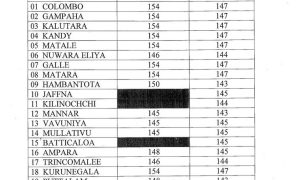(UTV|COLOMBO) – The Epidemiology Unit says Lankan health sectors remain on high alert over the spread of a mystery virus currently emerging in China.
Speaking to a prominent online news portal in the isle, the Unit Director Samitha Ginige said a continuous exchange of information is being maintained with the World Health Organisation pertaining to the virus.
However Director Ginige said while no cases of the virus have been detected in Sri Lanka at present, Airport and Port health authorities remain on alert concerning all arrivals to the island.
Meanwhile scientists say the number of people already infected by the mystery virus emerging in China is far greater than official figures suggest.
There have been 41 laboratory-confirmed cases of the new virus, but UK experts estimate the figure is closer to 1,700.
Two people are known to have died from the virus, which appeared in Wuhan city in December.
A disease outbreak scientist said he was substantially more concerned than he was a week ago. The work was conducted by the MRC Centre for Global Infectious Disease Analysis at Imperial College London, which advises bodies including the UK government and the World Health Organization.
Singapore and Hong Kong have been screening air passengers from Wuhan and US authorities announced similar measures starting on Friday at three major airports in San Francisco, Los Angeles and New York.
The crucial clue to the scale of the problem lies in the cases being detected in other countries.
While the outbreak is centred on Wuhan, there have been two cases in Thailand and one in Japan.
He added: “For Wuhan to have exported three cases to other countries would imply there would have to be many more cases than have been reported.”
It is impossible to get the precise number, but outbreak modelling, which is based on the virus, the local population and flight data, can give an idea.
The detailed calculations, which have been posted online ahead of publication in a scientific journal, came up with a figure of 1,700 cases.





















